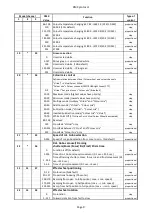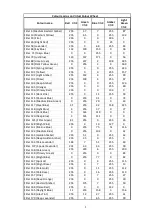
43
11. Maintenance and cleaning
It is absolutely essential that the fixture is kept clean and that dust, dirt and smoke-fluid residues must not build
up on or within the fixture. Otherwise, the fixture‘s light-output will be significantly reduced. Regular cleaning will
not only ensure the maximum light-output, but will also allow the fixture to function reliably throughout its life.
A soft lint-free cloth moistened with any good glass cleaning fluid is recommended, under no circumstances
should alcohol or solvents be used!
DANGER !
Disconnect from the mains before starting any
maintenance work
The front objective lens will require weekly cleaning as smoke-fluid tends to building up residues, reducing
the light-output very quickly. The cooling-fans should be cleaned monthly.
The interior of the fixture should be cleaned at least annually using a vacuum-cleaner or an air-jet.
Gobo wheels and the internal lenses should be cleaned monthly.
Remove dust and dirt from the fans and cooling vents using a soft brush and vacuum-cleaner.
Important! Check the air filters periodically and clean before they become
clogged!
Clean the air filters placed in the base. Use a vacuum cleaner, compressed air or you can wash them and put
back dry.
After replacing the air filters, reset the elapsed time counter in the menu "Information"
(Information--->Air Filters---> Elapsed Time).
Replacing the fuse.
Before replacing the fuse, unplug mains lead.
1. Remove the fuse holder on the rear panel of the base with a fitting screwdriver from the housing
(anti-clockwise).
2. Remove the old fuse from the fuse holder.
3. Install the new fuse in the fuse holder (only the same type and rating).
4. Replace the fuseholder in the housing and fix it.
Checking plastic parts of the fixture.
The plastic parts of the fixture should be checked for damages and beginning cracks at least every two months.
In addition, the plastic part of the front lens has to be checked mechanically (by means of movement by the
plastic part) if it is firmly fastened to the fixture. If hint of a crack is found on some plastic part, do not use the
fixture until the damaged part will be replaced.
Cracks or another damages of the plastic parts can be caused by the fixture transportation or manipulation and
also ageing process may influence plastic materials.
This checking is necessary for both fixed installations and preparing fixtures for renting. Any free moving parts
inside of the fixture head, cracked plastic or any plastic part of front lens not sitting properly in place need to
be immediately replaced.
Example of a crack on the plastic cover (for illustrative purpose).
















































